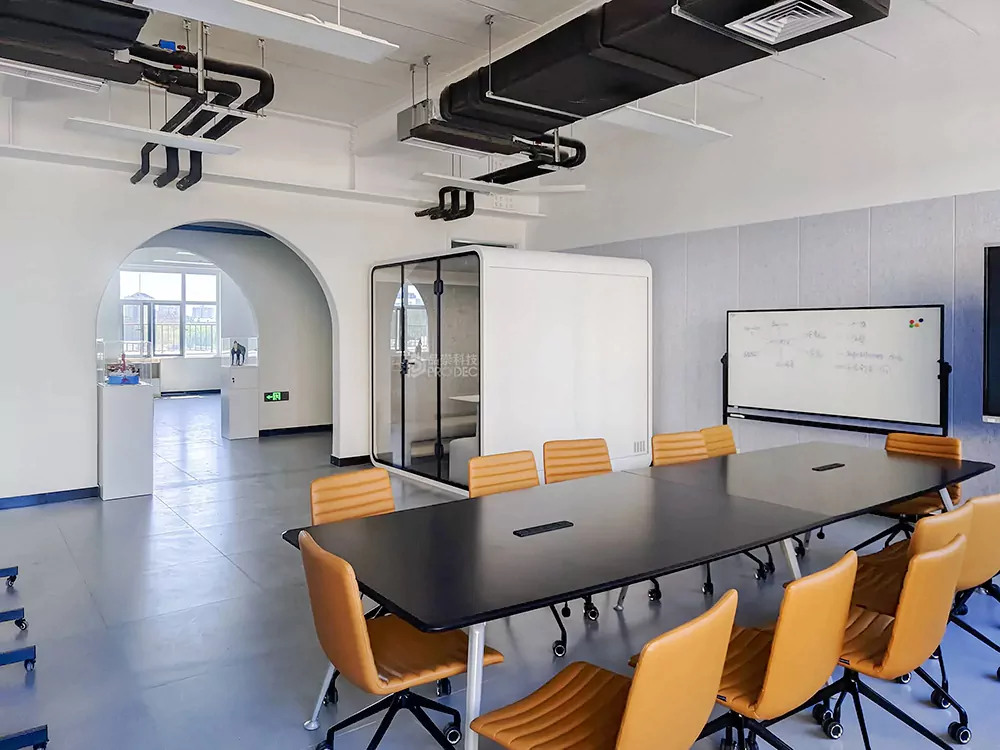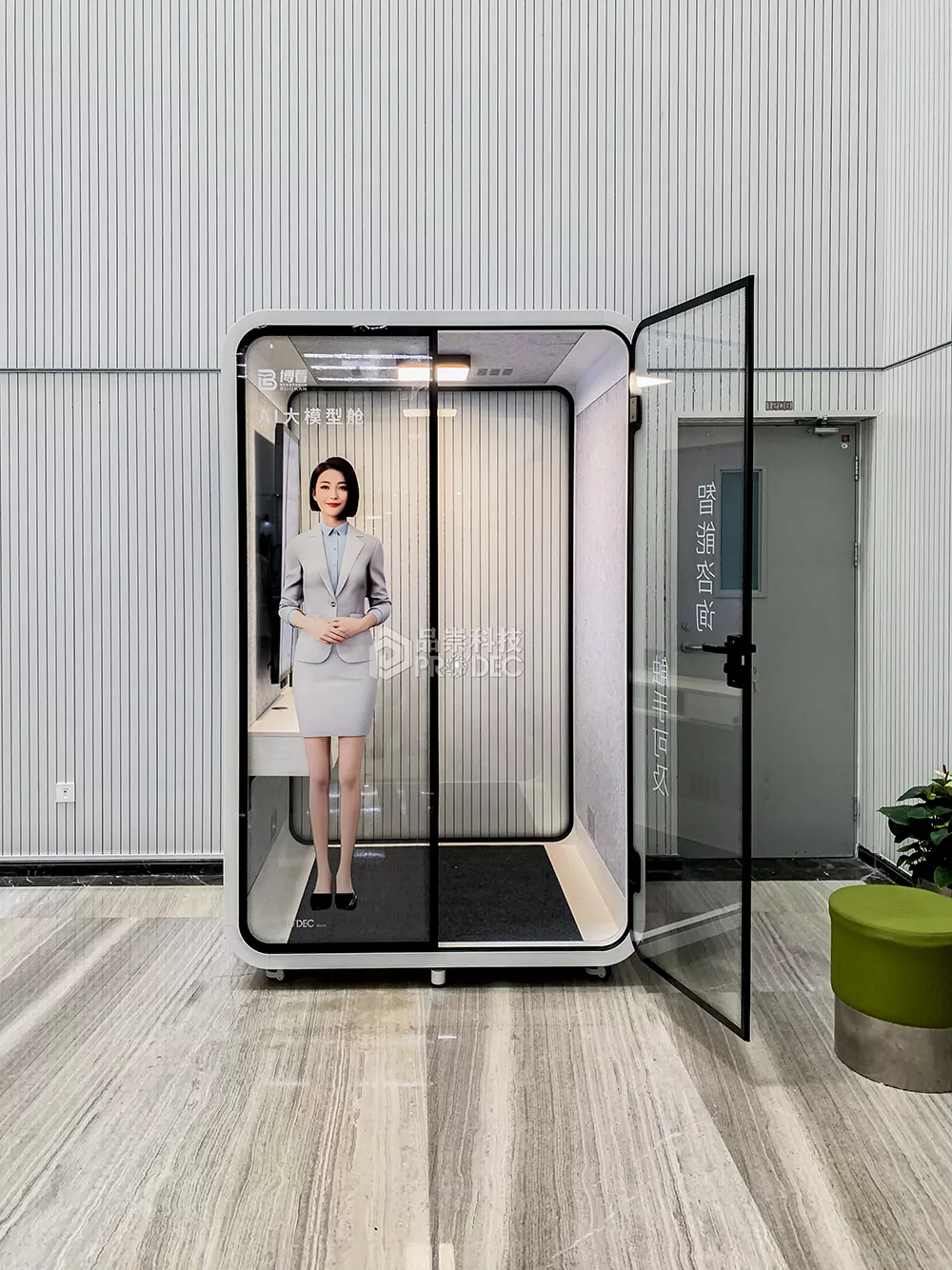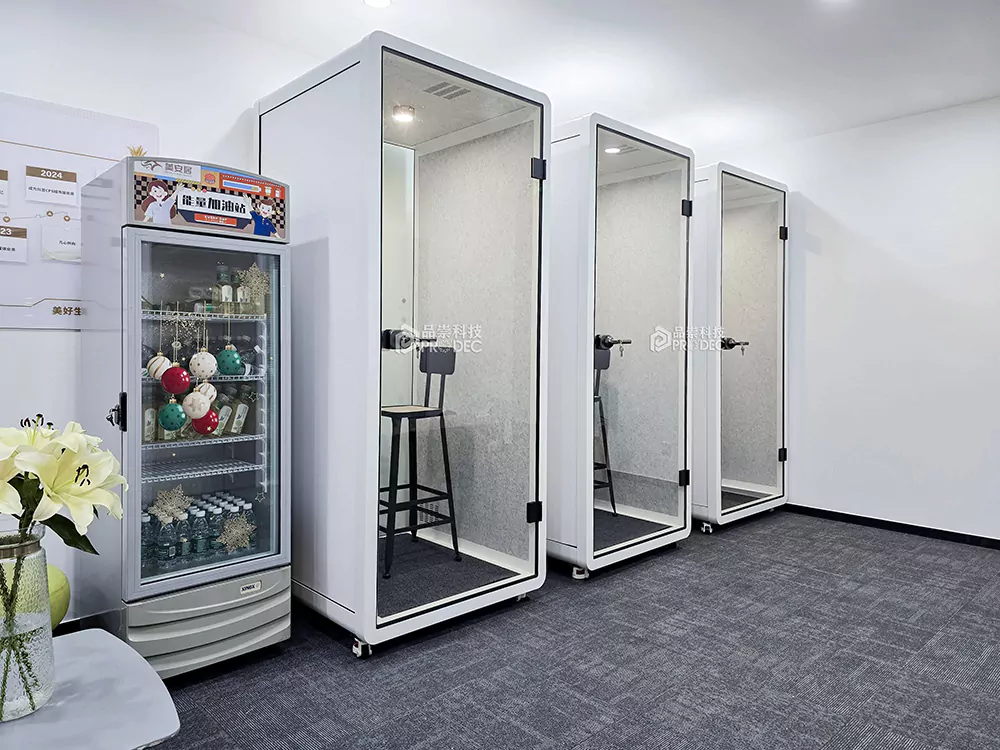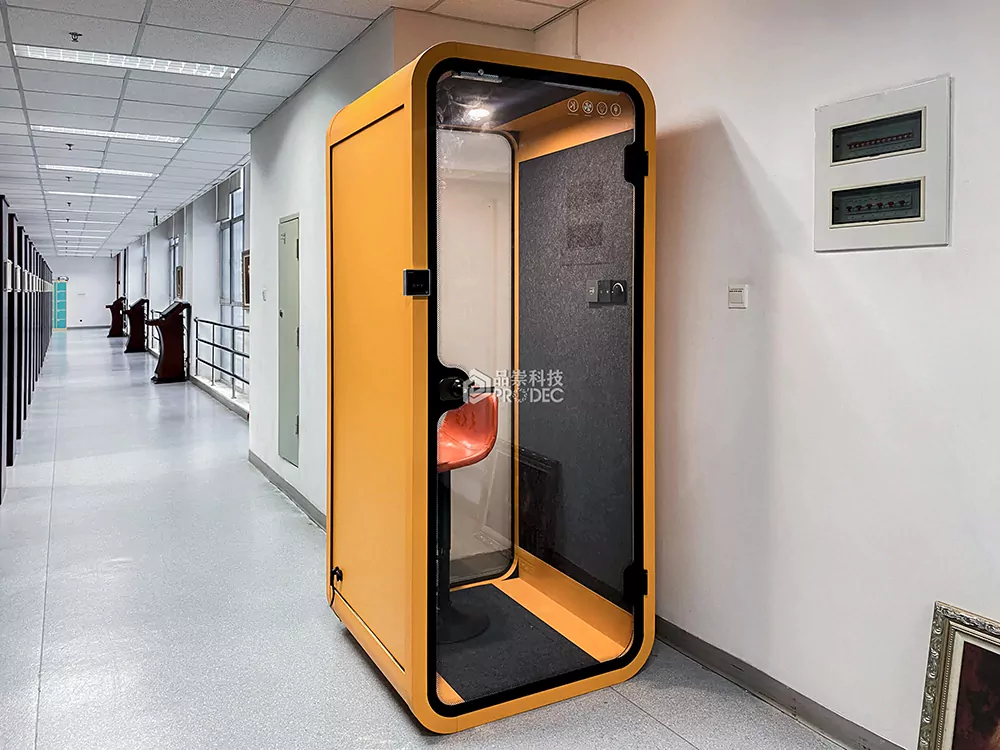Basic vs. Advanced Acoustic Booths with Ventilation
Why Ventilation is a Critical Feature in Modern Acoustic Recording Booths
When investing in an acoustic recording booth with ventilation, users are not just seeking superior sound isolation—they demand comfort, safety, and long-term usability. One of the most frequently cited pain points in customer reviews and product forums is poor air circulation in sealed environments. Without proper airflow, even the most acoustically advanced booth can become uncomfortable after just 20–30 minutes of use, leading to fogged glass, elevated CO₂ levels, and user fatigue.
Modern professionals—whether podcasters, remote workers, or voiceover artists—require extended sessions inside their booths. This makes integrated ventilation systems not just a luxury, but a necessity. A well-designed ventilation system maintains fresh air exchange without compromising acoustic integrity. It ensures temperature regulation, reduces humidity buildup, and prevents condensation on interior surfaces, especially critical in climates with high ambient moisture.
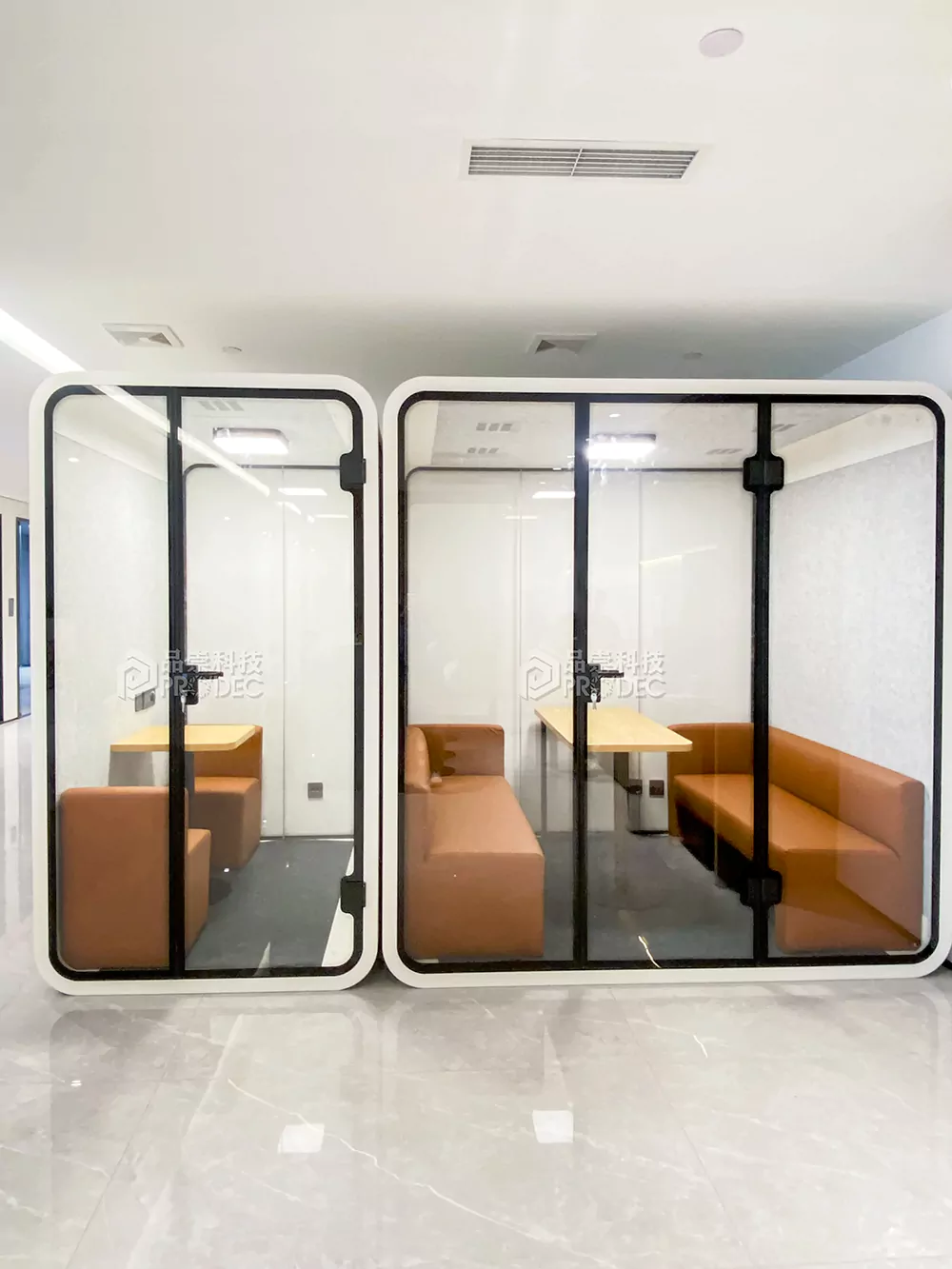
How Ventilation Systems Work Inside Acoustic Pods
Un acoustic recording booth with ventilation employs specialized engineering to balance airflow and noise control. The key lies in using low-noise axial fans combined with acoustic baffles or labyrinth ducts that allow air passage while blocking sound transmission. These systems typically operate between 25–35 dB, making them nearly inaudible during vocal recordings or phone calls.
The airflow path is carefully routed through sound-dampening channels, often lined with high-density foam or mineral wool insulation. This prevents external noise from entering and internal audio from leaking out. Most premium models feature adjustable fan speeds, allowing users to customize ventilation intensity based on occupancy duration and ambient temperature. Some advanced units even include HEPA filters to purify incoming air, enhancing overall indoor air quality.
Step-by-Step Guide to Selecting a Ventilated Acoustic Booth
Evaluate Your Primary Use Case: Determine whether the booth will be used for vocal recording, video conferencing, or focused work. Each scenario has different acoustic and ventilation demands.
- Check Sound Insulation Ratings: Look for booths offering at least 30 dB of noise reduction (Rw+Ctr ≥ 30dB). Higher ratings ensure better isolation for sensitive audio tasks.
- Verify Ventilation Type: Confirm if the unit includes passive vents or active forced-air systems. Active systems with silent fans are preferable for prolonged use.
- Assess Airflow Capacity: Opt for models specifying airflow in CFM (cubic feet per minute). A range of 15–30 CFM is ideal for single-occupant pods.
- Inspect Interior Materials: High-density acoustic foam, flame-retardant ABS panels, and non-toxic finishes contribute to both safety and performance.
- Review Lighting Options: Integrated LED lighting with 4000K color temperature supports alertness and reduces eye strain during long sessions.
- Confirm Power Requirements: Ensure compatibility with local voltage (100–240V) and check for USB charging ports or internal power outlets.
- Examine Door & Glass Specifications: Tempered double-glazed glass (≥10mm) enhances both safety and soundproofing.
- Consider Mobility & Assembly: Modular designs with wheels or foldable components offer flexibility for repositioning and storage.
- Validate Certifications: Look for ISO 9001, CE, and EPR compliance as indicators of quality manufacturing and environmental responsibility.
Top Features of Premium Acoustic Recording Booths with Ventilation
Beyond basic functionality, high-end acoustic recording booths with ventilation integrate smart design elements that elevate user experience. Adjustable acoustic panels allow fine-tuning of internal reverberation, making them suitable for both speech and music production. Modular construction enables customization in size and layout, fitting seamlessly into diverse office aesthetics or studio environments.
Many models now include IoT-ready features such as occupancy sensors, automatic lighting controls, and app-based environmental monitoring. These innovations provide real-time feedback on air quality, temperature, and humidity, ensuring optimal conditions throughout use. Additionally, removable floor mats made from eco-friendly materials enhance comfort while simplifying cleaning and maintenance.
Comparison: Basic vs. Advanced Acoustic Booths with Ventilation
| Fonctionnalité | Basic Model | Advanced Model |
|---|---|---|
| Ventilation System | Passive vents | Active fan with acoustic baffle (adjustable speed) |
| Réduction du bruit | 25-30 dB | 35–40 dB |
| Eclairage | Fixed LED strip | Dimmable 4000K LED with color tuning |
| Frame Material | Steel only | Aluminum alloy + steel hybrid |
| Personnalisation | Limited color options | Full interior/exterior design personalization |
Real User Feedback: What Customers Say About Ventilated Booths
Customer testimonials consistently highlight the importance of ventilation. One verified buyer from Berlin stated: “I used a non-ventilated booth for podcasting and had to stop every 20 minutes due to stuffiness. After upgrading to a model with an acoustic recording booth with ventilation, I can now record for over two hours without discomfort.”
Another professional voice actor from Los Angeles shared: “The silent fan system is a game-changer. No more foggy glass or闷热 feeling. Sound quality remains pristine, and my recordings are cleaner than ever.” These insights underscore how effective ventilation directly impacts both user satisfaction and audio output quality.
Installation & Maintenance Best Practices
- Choisir le bon emplacement : Place the booth on a level surface away from direct sunlight and HVAC drafts to maintain consistent internal conditions.
- Perform Initial Calibration: Test all systems—lighting, ventilation, and power outlets—before first use to ensure full functionality.
- Clean Filters Monthly: If equipped with HEPA or mesh filters, clean or replace them every 30–60 days depending on usage frequency.
- Inspect Seals Regularly: Check door gaskets and panel joints for wear to prevent air leaks and sound bleed.
- Update Firmware (if applicable): For smart-enabled booths, keep software up to date for optimal sensor performance and energy efficiency.
Application Scenarios: Where Ventilated Booths Excel
The versatility of an acoustic recording booth with ventilation makes it ideal for numerous settings. In open-plan offices, it serves as a private phone booth ou module de réunion, enabling confidential conversations without disturbing colleagues. Educational institutions use them for language labs or student interviews, where clear audio and fresh air are essential.
In home studios, musicians and content creators benefit from a controlled environment for vocal tracking, voiceovers, or ASMR recordings. The ventilation system ensures they can work for extended periods without overheating or fatigue. Even healthcare facilities have adopted these units for telehealth consultations, combining privacy with clinical-grade hygiene standards.
Cost Comparison: ROI of Investing in Ventilation
| Model Type | Average Price (USD) | Ventilation Included? | Expected Lifespan | User Satisfaction Score |
|---|---|---|---|---|
| Non-Ventilated Booth | $1,600 | Non | 3–5 years | 3.7 / 5.0 |
| Ventilated Booth (Standard) | $2,400 | Oui | 7–10 years | 4.6 / 5.0 |
| Ventilated Booth (Premium) | $3,850 | Yes (Smart Controls) | 10+ years | 4.9 / 5.0 |
Conclusion: The Future of Personal Sound Spaces
The evolution of the acoustic recording booth with ventilation reflects a growing understanding of human-centric design in professional environments. By addressing the fundamental need for breathable, comfortable spaces, manufacturers are setting new standards in productivity, audio fidelity, and user well-being. As remote work and digital content creation continue to rise, these ventilated pods will become indispensable tools across industries.
Investing in a high-quality ventilated booth is not merely about acquiring a piece of furniture—it’s about creating a sanctuary for focus, creativity, and clear communication. Whether you’re building a home studio or upgrading your office infrastructure, prioritize models that combine robust acoustics with intelligent ventilation for the best long-term value.
本文由人工智能技术生成,基于公开技术资料和厂商官方信息整合撰写,以确保信息的时效性与客观性。我们建议您将所有信息作为决策参考,并最终以各云厂商官方页面的最新公告为准。



